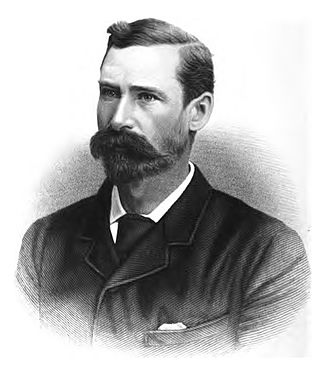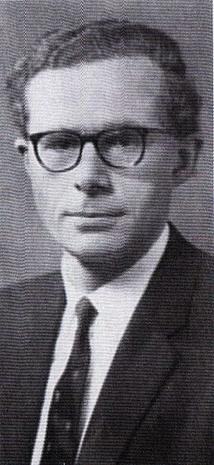Related Research Articles

The Institution of Civil Engineers (ICE) is an independent professional association for civil engineers and a charitable body in the United Kingdom. Based in London, ICE has over 92,000 members, of whom three-quarters are located in the UK, while the rest are located in more than 150 other countries. The ICE aims to support the civil engineering profession by offering professional qualification, promoting education, maintaining professional ethics, and liaising with industry, academia and government. Under its commercial arm, it delivers training, recruitment, publishing and contract services. As a professional body, ICE aims to support and promote professional learning, managing professional ethics and safeguarding the status of engineers, and representing the interests of the profession in dealings with government, etc. It sets standards for membership of the body; works with industry and academia to progress engineering standards and advises on education and training curricula.
Events from the year 1771 in Great Britain.

Bryan Donkin FRS FRAS developed the first paper making machine and created the world's first commercial canning factory. These were the basis for large industries that continue to flourish today. Bryan Donkin was involved with Thomas Telford's Caledonian Canal, Marc and Isambard Brunel's Thames Tunnel, and Charles Babbage's computer. He was an advisor to the government and held in high esteem by his peers.
Sydney Bryan Donkin was a British civil engineer. His parents were Bryan Donkin Junior and Georgina Dillon. Donkin was educated at University College, London before beginning work for Sulzer Brothers, mechanical engineers, later the Sulzer company. Whilst based at this company's headquarters in Switzerland he became interested in Alpine climbing and spent much of his spare time climbing the nearby peaks. He was a founding member of the Climbers' Club and served on their committee in 1908 and later as vice-president and president.
The Smeatonian Society of Civil Engineers was founded in England in 1771. It was the first engineering society to be formed anywhere in the world, and remains the oldest. It was originally known as the Society of Civil Engineers, being renamed following its founder's death.
Sir Robert Meredydd Wynne-Edwards CBE, DSO, MC and bar was a British civil engineer and army officer. Wynne-Edwards was born in Cheltenham and educated at Giggleswick School and Leeds Grammar School before being commissioned into the Royal Welch Fusiliers at the outbreak of the First World War. He served on the Western Front in France where he received a Mention in Despatches, Distinguished Service Order and a Military Cross and bar for his gallantry and leadership. Following the war he studied engineering at Christ Church, Oxford from which he graduated with second class honours in 1921.
Angus Anderson Fulton was a British civil engineer.
Sir Thomas Angus Lyall Paton was a British civil engineer from Jersey. Paton was born into a family that had founded the civil engineering firms of Easton, Gibb & Son and Sir Alexander Gibb & Partners and he would spend his entire professional career working for the latter. Following his graduation from University College London one of his first jobs was the construction of a dam in Maentwrog in Wales. Paton later became an expert on dams and much of his career was devoted to their construction. In 1931 he undertook an economic survey of Canada which recommended a programme of works for its port system. This report was still being used into the 1970s. During the Second World War Paton was involved with the construction of gun emplacements in the Dardanelles, Turkey and of caissons for the Mulberry Harbours used after the Invasion of Normandy.
Sir William "Kirby" Laing was a British civil engineer.
Sir William Gordon Harris was a British civil engineer. His early career was with the London, Midland and Scottish Railway and in the Sudanese Irrigation Department before he began a 26-year spell with the Admiralty Civil Engineers Department. Harris rose to become Civil Engineer in Chief in 1959 and was responsible for building facilities to cope with the change in focus of the Royal Navy from gunnery ships to aircraft carriers and submarines, including the nuclear submarine docks at Faslane. Harris was later made director-general of highways in the Ministry of Transport during which time he was responsible for the construction of the 650 miles of motorway, a focus on ground investigation at pre-tender stage and the development of new motorway signalling and telecommunications systems. He later entered private practice as a consulting engineer and was chairman of the Port of Dover. Harris also served as president of the Institution of Civil Engineers and of the Smeatonian Society of Civil Engineers.

Charles Hawksley (1839–1917) was a British civil engineer. Hawksley was born in Nottingham, England in 1839 and was the son of civil engineer Thomas Hawksley. He studied at University College London and after graduating entered into apprenticeship with his father's firm, which had been established in 1852 and specialised in water related projects. From 1857 Hawksley was, with his father, an adviser to the Great Yarmouth Waterworks Company and in 1866 became a partner in his father's firm. Hawksley worked extensively in the water industry and clients included the Newcastle and Gateshead Water Company, Sunderland and South Shields Water Company, Consett Waterworks, Weardale and Shildon District Waterworks and Durham County Water Board. Hawksley, with his father, built the Catcleugh Reservoir in Northumberland for the Newcastle and Gateshead Water Company between 1899 and 1905. In addition to his work on reservoirs, pipes and other infrastructure for the water companies he also undertook work for the Bishop Auckland District Gas Company.

John Clarke Hawkshaw was a British civil engineer.
Sir Charles Langbridge Morgan CBE was a British civil engineer. A railway engineer, he spent his early career on several railway construction projects before joining the Great Eastern Railway where his responsibilities included construction of Liverpool Street station. Morgan became chief engineer of the London, Brighton and South Coast Railway in 1896 and directed improvements to London Victoria station and Grosvenor Bridge. During the First World War Morgan was a lieutenant-colonel in the Royal Engineers, carrying out "special engineering duties" in Italy and France for the War Office. He later served as the army's deputy director of railways, on the advisory expert committee to the Ministry of Munitions and on the Disposal Board of the Disposal and Liquidation Commission.

Sir Alan Marshall Muir Wood was a British civil engineer.
Peter Arthur Cox was a British civil engineer.
Geoffrey Morse Binnie FRS FEng was a British civil engineer and writer particularly associated with dams and reservoirs.
Thomas Yeoman was a millwright, surveyor and civil engineer who played a significant part in the early industrial revolution and became the first president of the first engineering society in the world, the Society of Civil Engineers, now known as the Smeatonian Society of Civil Engineers.
Michael Norman Tizard Cottell was a British civil engineer.
Robin Lee Wilson was a British civil engineer. He served as chairman of the Travers Morgan Consulting Group and EC Harris and also as president of the Institution of Civil Engineers in 1991–92. He was master of the Worshipful Company of Paviors in 2003 when the livery company updated its ordinances for the first time since 1479. Wilson also chaired the Construction Industry Council and the heritage trust which manages the Coultershaw Wharf and Beam Pump.
George Fleming is a Scottish civil engineer specialising in environmental issues. Educated at the Royal College of Science and Technology, Stanford University and the University of Strathclyde he is a doctor of philosophy. His research started with studies of the hydrology of the River Clyde that expanded to a range of subjects including, flood risk, dredging, nuclear waste management, decommissioning of North Sea platforms and contaminated land. He has written reports on flooding for the Institution of Civil Engineers and the British government. Fleming was involved in the planning stages of the Glasgow Garden Festival of 1988 and established a way of reusing dredgings from the Clyde to provide topsoil for the event. He has served as a non-executive director of British Waterways, Port of Tyne boards and for WRAP, a government quango whose aim was to promote recycling and resource efficiency. He is founder and chairman of the EnviroCentre environmental consultancy, of which his son is now managing director.
References
- ↑ "Gwilym Roberts obituary". The Times online. Retrieved 11 September 2020.(subscription may be required or content may be available in libraries)
- ↑ Masterton, Gordon (2005), ICE Presidential Address, archived from the original on 3 January 2011, retrieved 24 October 2010
- 1 2 "David Gwilym Morris Roberts". Director Check. Retrieved 4 August 2012.
- 1 2 3 4 5 6 7 8 9 10 11 12 13 14 15 16 17 Roberts, Gwilym (2006). Chelsea to Cairo – 'Taylor-made' Water Through Eleven Reigns and in Six Continents A History of John Taylor & Sons and their predecessors. London: Thomas Telford. pp. 272–4. ISBN 0-7277-3411-3.
- ↑ "Thankyou to all who have supported Sidney Sussex in 2009 & 2010". Pheon magazine. Sidney Sussex College. Retrieved 5 August 2012.
- ↑ "No. 37872". The London Gazette . 4 February 1947. p. 616.
- ↑ "No. 38699". The London Gazette . 26 August 1949. p. 4131.
- ↑ "No. 41192". The London Gazette . 4 October 1957. p. 5764.
- ↑ "No. 43075". The London Gazette . 6 August 1963. p. 6641.
- ↑ "British Standard CP 2012-1 1974". scribd.com. Retrieved 4 August 2012.
- ↑ "Costs and Benefits of Estuarine and Coastal Pollution Control". IWA Publishing. Archived from the original on 6 September 2014. Retrieved 4 August 2012.
- ↑ Institution of Civil Engineers. "Past Presidents". Archived from the original on 22 August 2010. Retrieved 19 May 2008.
- ↑ "Research Councils". Hansard. Retrieved 4 August 2012.
- ↑ Watson, Garth (1989). The Smeatonians. London: Thomas Telford. p. 175. ISBN 9780727715265.
- 1 2 "DGM ROBERTS". Journalogy.net. Archived from the original on 21 February 2013. Retrieved 4 August 2012.
- ↑ "Smeaton Lecture 2015". ice. Retrieved 13 November 2015.
- ↑ "Presidents". Merchant Taylors' Old Boys' Association. Archived from the original on 6 September 2014. Retrieved 4 August 2012.
- ↑ "New Donations to the College". Pheon magazine. Sidney Sussex College. Archived from the original on 6 March 2014. Retrieved 4 August 2012.
- ↑ "Annual Report 2007/8" (PDF). Royal Academy of Engineering. Archived from the original (PDF) on 8 October 2012. Retrieved 4 August 2012.
- ↑ "Director Details – Mr David Gwilym Morris Roberts CBE FEng FICE FIMechE". UKData.com. Retrieved 4 August 2012.
- ↑ Roberts